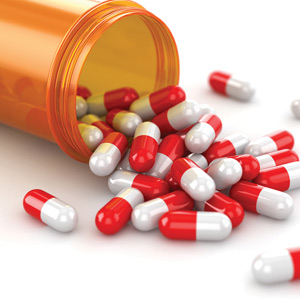America‘s obsession with pain pills is...PAINFUL

Q. Having heard so much about the abuse of pain killers, I am always unsure if it is okay to take them for routine aches and pains, and if so, which ones to take. Please advise.
Dr. Gulshan Harjee: Ever since pain came to be called “the fifth vital sign,” pill mills have sprouted up everywhere, dishing out prescriptions of pain medications without a visit that is ordinarily required in credible doctors’ offices. Pill mills have been indicted for illegal dispensing with ease—without a physical examination, the new objective tests for pain, or tests for presence of a disease or condition that validates the need for a pain prescription. Here lies danger! Almost 800,000 people are treated a year in emergency rooms in this country for overdosing on pain medications. Many cases are accidental; however a significant number are due to tolerance and addiction leading to complications such as liver failure, respiratory distress, and death.
Most people are familiar with acetaminophen (Tylenol) and some of the nonsteroidal anti-inflammatory drugs or NSAIDs, including aspirin, ibuprofen (Advil and Motrin), naproxen (Aleve), indomethacin (Indocin), and piroxicam (Feldene). There are more than 20 of them, and many are OTC (over the counter) and taken orally.
Taking a prescription orally requires several steps before the medication actually reaches the pain headquarters. The drug passes the stomach where it is released from the pill or capsule. It reaches the blood system, passes the liver to alter its chemical process, and visits the kidney on its way out of the body. All these organs are affected by these chemicals. It is therefore not rare to hear that people consuming pain medications for too long may harm their stomachs with ulceration and stomach bleeding.
Acetaminophen overdose (from taking it for too long, or taking too high a dose, or drinking alcohol, or taking other medications that have it as an ingredient) is the leading cause of acute liver failure in the US—and liver failure may or may not reverse.
Opioids (e.g. hydrocodone, Percocet, Tylenol #3, some cough medications such as Tussionex, Hycodan, and patches such as Fentanyl and Duragesic) are prescription pain medications that need much supervision and caution. The body is likely to become tolerant over time and requiring higher doses to treat the same pain, leading to overdose. When opioids are mixed with sleeping pills, alcohol, and certain antidepressants, they can be extremely dangerous, especially in older patients. It is ideal to be under the care of a credible pain specialist who can monitor usage and make adjustments as tolerance is suspected. Many a fatality has occurred—Marilyn Monroe, Michael Jackson, Whitney Houston, and Bollywood movie star Meena Kumari—due to addiction, mixing, and overuse of pain medications. The controversial new drug Zohydro ER has the medical community much concerned about its risks of abuse and addiction.
New pain medications such as Ultram and Neurontin are less costly than Lyrica (which will soon go generic); however addiction is a risk. Combinations avoid systemic side effects.
What is best? With acute, short-lived pain, e.g. tooth extraction, try a low dose NSAID with or without Tylenol #3. For joint pains, e.g. arthritis, try NSAIDs with chondroitin sulfate. Topical ointments (Voltren, Zostrix) and prescription patches (Lidoderm, Flector) may greatly reduce the use of prescription medications. Water aerobics, low impact regular exercising, physical therapy, Tai Chi, and acupuncture all help acute and chronic pain.
Be cautioned that chronic conditions such as diabetes and cancer may create opportunities for other organ damage; at every step, consultation with your physician is advised.
Some dos and don’ts:
If you take aspirin for cardiovascular benefits, take it 30 minutes before an NSAID or 8 hours after.
Watch for blood pressure increases.
Don’t take NSAIDs long term: most increase the risk of heart attack—naproxen (Aleve) has least risk—and taking them long term increases other risk.
Mixing drugs can be either very dangerous or helpful, so don’t treat yourself on your own. Let your physician, surgeon, and anesthesiologist know your complete list of all prescriptions, over the counter medicines, ayurvedic or naturopathic products, and supplements.
[Gulshan Harjee, M.D., is a board certified internist in private practice with an emphasis on prevention. Please email your health and medical questions for consideration in this column to: gharjee@comcast.net. The material in this column is of a general nature, and must not be construed as specific medical advice. This column rotates monthly along with the Fitness Lifestyle column by Aarti Patel.]
Enjoyed reading Khabar magazine? Subscribe to Khabar and get a full digital copy of this Indian-American community magazine.
blog comments powered by Disqus










